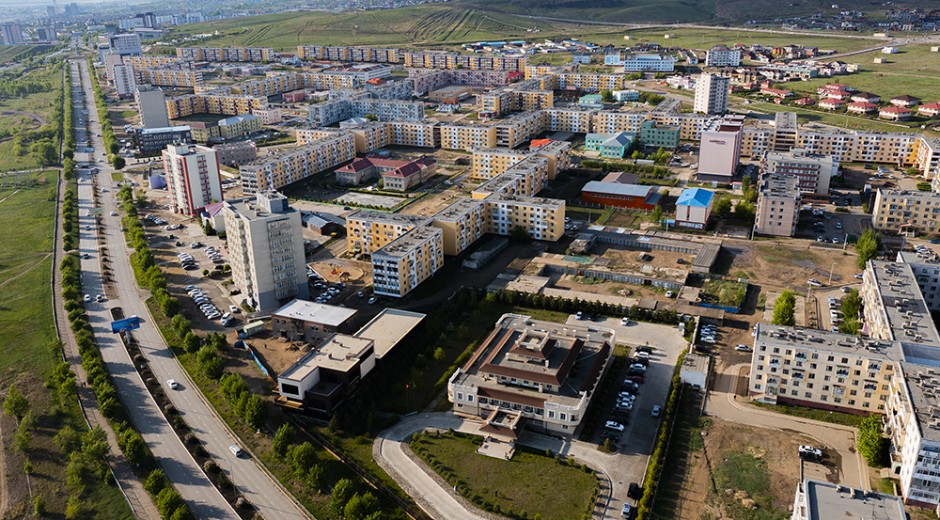


Mongolia is a landlocked country in East and Central Asia that is well-known for its vast grasslands, towering mountains, Gobi Desert, and nomadic lifestyle. It also has a number of thriving cities, which are crucial to the nation’s political, cultural, and economic activity. The five largest cities in Mongolia are examined in this article. It is an interesting and diverse country to explore because each city has a distinctive history, culture, and significance.
Ulaanbaatar, also known as Ulan Bator, is the capital and largest city of Mongolia. It is located in the central part of the country and is home to approximately 41% of the country’s entire population.
The population of the city is approximately 1,650,000 as of 2023 and it comes as no surprise that it has the highest density of humans per square kilometer in the whole of Mongolia.
The city has a rich history that dates back to the 17th century and has undergone significant development in recent years, as people from smaller cities, towns, and nomads settle in Ulaanbaatar to have the chance at more opportunities in the business hub of the country.
The city is a hub of economic, political, and cultural activity in Mongolia, and it is home to many government offices, embassies, universities, and museums. The city is also known for its beautiful parks and monuments, including Sükhbaatar Square, which is the central square of Ulaanbaatar and is named after the revolutionary leader Damdin Sükhbaatar.

Erdenet is Mongolia’s second largest city and is located in the northern part of the country. The city is home to around 2.5% of Mongolia’s total population. The population of Erdenet is around 83,379 people as of 2023.
Seeing the population difference between Ulaanbaatar, the largest city with its 1,405,000 people really shows how small the rest of the cities in the country are. In contrast to Ulaanbaatar being an older city founded in the 17th century, Erdenet is a very young city, only being founded in the year 1974 as a mining town.
After many years of development, the city is now home to the 4th largest copper mine in the world which produces around 22.23 million tons of ore per year. Being the large mine that it is it comes as no surprise that it is a major contributor to the Mongolian economy at around 13.5% of Mongolia’s GDP.

Darkhan is the third largest city in Mongolia and is also located in the northern territory of the country. The city was founded in 1961 and is home to around 2.1% of Mongolia’s population. The city of Darkhan itself has a population of approximately 74,738 people as of 2023.
Darkhan was founded to be an important centre of industry, agriculture, and trade in Mongolia, and it is still home to many factories, farms, and markets. Around 80% of DarKhan’s residents live in apartments in the city’s residential areas while the other 20% live in Yurts (Traditional nomadic Mongolian tents) on the outskirts of the city.
Darkhan has a very educated population and is the second largest educational center in Mongolia. The city attracts hundreds of students from around the country to attend the schools there. According to www.mongolia-guide.com Darkhan is home to “10 higher education institutions, 25 secondary schools, 14 kindergartens, the Institute of Management and Development, the Regional Business Development Center, and the Plant Science and Agricultural Training Research Institute.”

Choibalsan is the fourth largest city in Mongolia and is located in the eastern part of Mongolia. The city was founded in 1940 and is home to around 1.1% of Mongolia’s total population. Choibalsan has a population of approximately 38,537 people as of 2023.
Up until 1941 Choibalsan had a different name, this name being “Bayan Tümen” which was changed in 1941 to Choibalsan to honor Khorloogiin Choibalsan who was a communist leader in the Mongolian revolution of 1921. The city is currently the capital of Dornod province.
For many centuries before Choibalsan became a city it was known as a trading post. During the time that the soviets occupied Mongolia, they grew the city into an economic powerhouse in western Mongolia but in 1992 when Mongolia gained its independence the Russians left. Since then the city has suffered greatly and has, unfortunately, suffered from a very high unemployment rate.

Mörön is Mongolia’s fifth largest city and is located in the northwestern part of Mongolia. The city was founded in 1939 and is home to approximately 1% of Mongolia’s total population. The population in Mörön is around 35,789 people as of 2023.
Mörön’s history originally started in 1809 when a monastery called the Möröngiin Khuree monastery was built on the banks of the Delgermörön river. Unfortunately, during the soviet purge of religion in Mongolia the monastery was destroyed but by that time a small city had already been built in the surrounding area.
In modern times it is a relatively well-developed city that has an airport, many schools, museums, and monasteries that were rebuilt after Mongolia gained its independence. The city has paved roads and is also connected to Ulaanbaatar by paved roads. That road is commonly used by people going to visit Khövsgöl lake which is also near the city.

Mongolia’s cities may not be as well-known as its natural wonders, but they are significant and unique in their own right. Mongolia’s cities are a reflection of the country’s rich history, culture, and economic development, making Mongolia a fascinating destination to visit not only for its beautiful nature but also for its amazing cities.